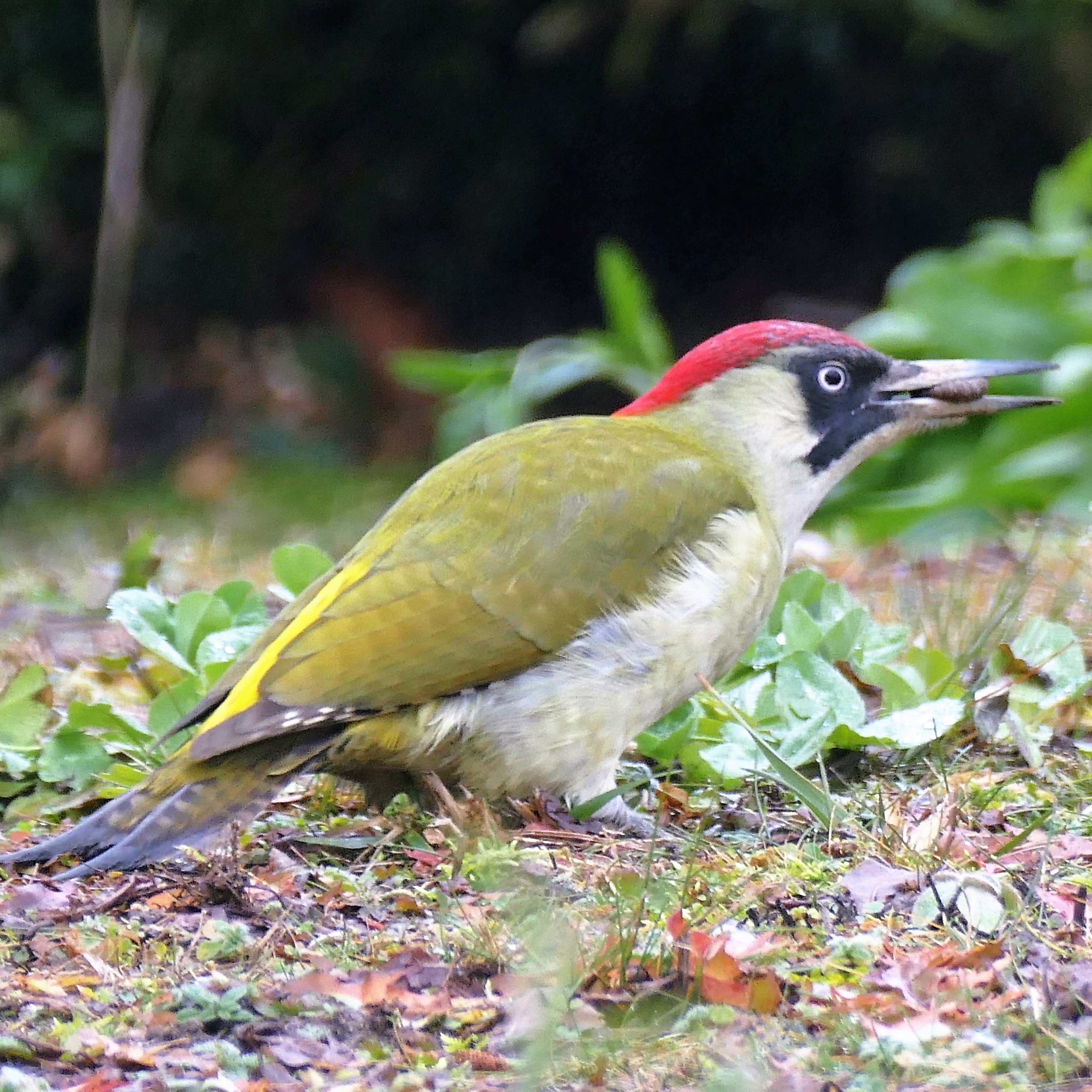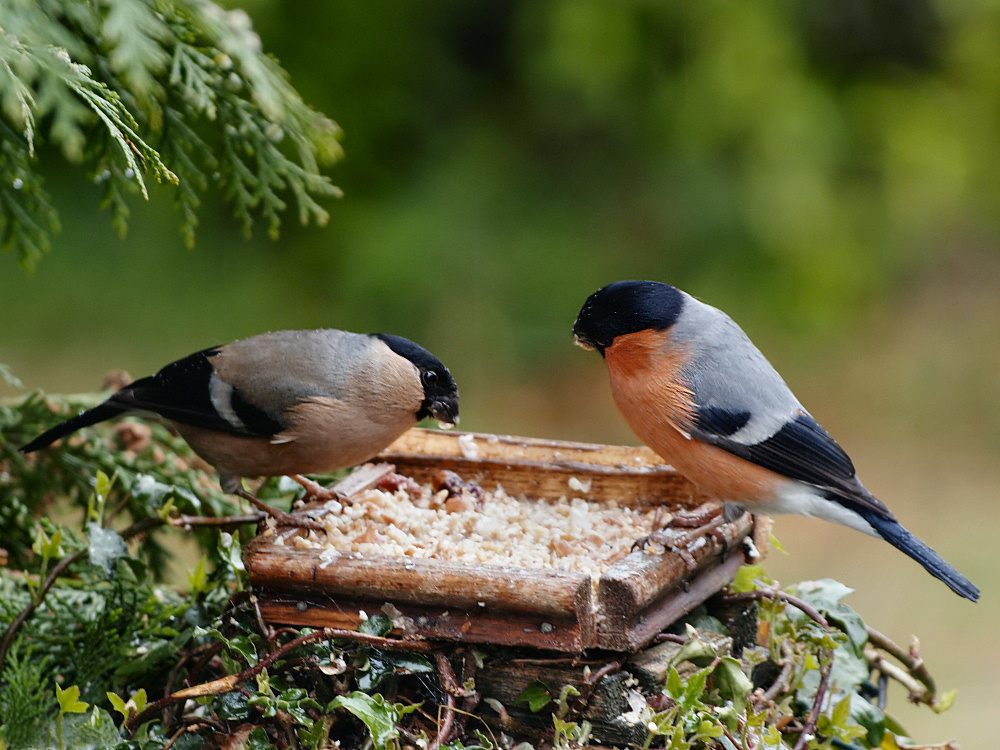|
Temple Copse
Temple Copse is a Local Nature Reserve on the northwestern outskirts of Bracknell in Berkshire. It is owned and managed by Bracknell Forest Borough Council. Along with Jock's Copse and Tinkers Copse it forms part of what is known locally as The Three Copses. Geography and site This site is ancient coppiced woodland, mainly oak and hazel. There is a badger run from this copse to Tinkers Copse. History In 2002 the site was declared as a local nature reserve by Bracknell Forest Borough Council. Fauna The site has the following fauna: Mammals *European badger *Roe deer *Wood mouse *Eastern gray squirrel Amphibians and Reptiles *Grass snake Birds * Great spotted woodpecker *Lesser spotted woodpecker *European green woodpecker *Jay *Eurasian bullfinch *European robin *Eurasian blue tit Invertebrates *Small tortoiseshell Flora The site has the following flora: Trees *''Sorbus torminalis'' *''Quercus robur'' *''Corylus avellana'' *'' Carpinus betulus'' Plants * ... [...More Info...] [...Related Items...] OR: [Wikipedia] [Google] [Baidu] |
European Green Woodpecker
The European green woodpecker (''Picus viridis'') is a large green woodpecker with a bright red crown and a black moustache. Males have a red centre to the moustache stripe which is absent in females. It is resident across much of Europe and the western Palearctic but in Spain and Portugal it is replaced by the similar Iberian green woodpecker (''Picus sharpei''). The European green woodpecker spends much of its time feeding on ants on the ground and does not often 'drum' on trees like other woodpecker species. Though its vivid green and red plumage is particularly striking, it is a shy bird, and is more often heard than seen, drawing attention with its loud calls. A nest hole is excavated in a tree; four to six eggs are laid which hatch after 19–20 days. Taxonomy The European green woodpecker was formally described by the Swedish naturalist Carl Linnaeus in 1758 in the tenth edition of his ''Systema Naturae'' under its current binomial name ''Picus viridis''. The type lo ... [...More Info...] [...Related Items...] OR: [Wikipedia] [Google] [Baidu] |
Lychnis Flos-cuculi
''Silene flos-cuculi'' (syn. ''Lychnis flos-cuculi''), commonly called ragged-robin, is a perennial herbaceous plant in the family Caryophyllaceae. This species is native to Europe and Asia, where it is found along roads and in wet meadows and pastures. In Britain it has declined in numbers because of modern farming techniques and draining of wet-lands and is no longer common. However, it has become naturalized in parts of the northern United States and eastern Canada. Description ''Silene flos-cuculi'' forms a rosette of low growing foliage with numerous flower stems 20 to 90 cm tall. The stems rise above the foliage and branch near the top of the stem and end with the pink flowers which are 3–4 cm across. The flowers have five narrow petals deeply divided into four lobes giving the flower an untidy, ragged appearance, hence its common name. The calyx tube is five-toothed with ten stamens. The leaves are paired, with the lower leaves spoon-shaped and stalked. The ... [...More Info...] [...Related Items...] OR: [Wikipedia] [Google] [Baidu] |
Primula Vulgaris
''Primula vulgaris'', the common primrose, is a species of flowering plant in the family Primulaceae, native to western and southern Europe, northwest Africa, and parts of southwest Asia.''Flora Europaea''''Primula vulgaris''/ref> The common name is primrose,Natural History Museum''Primula vulgaris''/ref> or occasionally common primrose or English primrose to distinguish it from other ''Primula'' species also called primroses. None of these are closely related to the evening primroses (genus ''Oenothera''). Etymology The scientific name ''Primula'' is a diminutive of the Latin ''primus'', "prime", alluding to the fact that this flower is among the first to appear in spring. The vernacular name has the same meaning: primrose derives from a late Latin form ''prima rosa'', consisting of ''prima'', "first" (feminine), and ''rosa'', "rose". The Latin specific epithet ''vulgaris'' means "common", in the sense of "widespread". Description ''Primula vulgaris'' is a perennial growing ta ... [...More Info...] [...Related Items...] OR: [Wikipedia] [Google] [Baidu] |
Carpinus Betulus
''Carpinus betulus'', the European or common hornbeam, is a species of tree in the birch family Betulaceae, native to Western Asia and central, eastern, and southern Europe, including southern England. It requires a warm climate for good growth, and occurs only at elevations up to . It grows in mixed stands with oak, and in some areas beech, and is also a common tree in scree forests. Hornbeam was also known as 'Yoke Elm'. Description It is a deciduous small to medium-size tree reaching heights of , rarely , and often has a fluted and crooked trunk. The bark is smooth and greenish-grey, even in old trees. The buds, unlike those of the beech, are long at the most, and pressed close to the twig. The leaves are alternate, long, with prominent veins giving a distinctive corrugated texture, and a serrated margin. It is monoecious, and the wind-pollinated male and female catkins appear in early summer after the leaves. The fruit is a small long nut, partially surrounded by a thre ... [...More Info...] [...Related Items...] OR: [Wikipedia] [Google] [Baidu] |
Corylus Avellana
''Corylus avellana'', the common hazel, is a species of flowering plant in the birch family Betulaceae. It is native to Europe and western Asia. It is an important component of the hedgerows that were the traditional field boundaries in lowland England. The wood was traditionally grown as coppice, the poles cut being used for wattle-and-daub building and agricultural fencing. Common hazel is cultivated for its nuts. The name hazelnut applies to the nuts of any species in the genus ''Corylus'', but in commercial settings a hazelnut is usually that of ''C. avellana''. This hazelnut or cob nut, the kernel of the seed, is edible and used raw or roasted, or ground into a paste. The cob is round, compared with the longer filbert nut. Description Common hazel is typically a shrub reaching tall, but can reach . The leaves are deciduous, rounded, long and across, softly hairy on both surfaces, and with a double-serrate margin. The flowers are produced very early in spring, before ... [...More Info...] [...Related Items...] OR: [Wikipedia] [Google] [Baidu] |
Quercus Robur
''Quercus robur'', commonly known as common oak, pedunculate oak, European oak or English oak, is a species of flowering plant in the beech and oak family, Fagaceae. It is a large tree, native plant, native to most of Europe west of the Caucasus. It is widely cultivated in temperate regions elsewhere and has escaped into the wild in scattered parts of China and North America. Description ''Quercus robur'' is a large deciduous tree, with circumference of grand oaks from to an exceptional . The Majesty Oak with a circumference of is the thickest tree in Great Britain. The Brureika (Bridal Oak) in Norway with a circumference of (2018) and the Kaive Oak in Latvia with a circumference of are among the thickest trees in Northern Europe. The largest historical oak was known as the Imperial Oak from Bosnia and Herzegovina. This specimen was recorded at 17.5 m in circumference at breast height and estimated at over 150 m³ in total volume. It collapsed in 1998. The species has l ... [...More Info...] [...Related Items...] OR: [Wikipedia] [Google] [Baidu] |
Sorbus Torminalis
''Sorbus torminalis'', with common names wild service tree, chequers, and checker tree, is a species of tree in the mountain Fraxinus, ash or rowan genus (''Sorbus'') of the rose family (Rosaceae), that is native to Europe, parts of northern Africa and western Asia. Description It is a medium-sized deciduous tree growing to tall, with a trunk up to in diameter. The Bark (botany), bark is smooth and grayish, but flaky, peeling away in squarish plates to reveal darker brown layers. The leaves are long and broad with a petiole, dark green on both sides, with five to nine acute lobes; the basal pair of lobes are spreading, the rest more forward-pointing and decreasing in size to the leaf apex, and with finely toothed margins; the undersides have small hairs when young, but both sides are smooth and shiny when older; the autumn colour is yellow to red-brown. The flowers are in diameter, with five white petals and 20 creamy-white stamens; they are produced in corymbs diameter in ... [...More Info...] [...Related Items...] OR: [Wikipedia] [Google] [Baidu] |
Small Tortoiseshell
The small tortoiseshell (''Aglais urticae'') is a colourful Eurasian butterfly in the family Nymphalidae. Adults feed on nectar and may hibernate over winter; in warmer climates they may have two broods in a season. While the dorsal surface of the wings is vividly marked, the ventral surface is drab, providing camouflage. Eggs are laid on the common nettle, on which the larvae feed. Description It is a medium-sized butterfly that is mainly reddish orange, with black and yellow markings on the forewings as well as a ring of blue spots around the edge of the wings. It has a wingspan ranging from 4.5 to 6.2 cm. Technical description A bright foxy red ground-colour; the forewing with 3 black costal spots, whose interspaces are yellow, there being a larger black spot in the middle of the hindmarginal area and two smaller ones in the disc between the 3 radial and 2 median; hindwing with the basal half black; both wings with black submarginal band bearing blue spots. Underside of ... [...More Info...] [...Related Items...] OR: [Wikipedia] [Google] [Baidu] |
Eurasian Blue Tit
The Eurasian blue tit (''Cyanistes caeruleus'') is a small passerine bird in the tit family, Paridae. It is easily recognisable by its blue and yellow plumage and small size. Eurasian blue tits, usually resident and non-migratory birds, are widespread and a common resident breeder throughout temperate and subarctic Europe and the western Palearctic in deciduous or mixed woodlands with a high proportion of oak. They usually nest in tree holes, although they easily adapt to nest boxes where necessary. Their main rival for nests and in the search for food is the larger and more common great tit. The Eurasian blue tit prefers insects and spiders for its diet. Outside the breeding season, they also eat seeds and other vegetable-based foods. The birds are famed for their acrobatic skills, as they can hold on to the outermost branches of trees and shrubs and hang upside down when looking for food. Taxonomy The Eurasian blue tit was described by Carl Linnaeus in 1758 in the 10th ... [...More Info...] [...Related Items...] OR: [Wikipedia] [Google] [Baidu] |
European Robin
The European robin (''Erithacus rubecula''), known simply as the robin or robin redbreast in Great Britain & Ireland, is a small insectivorous passerine bird that belongs to the chat subfamily of the Old World flycatcher family. About in length, the male and female are similar in colouration, with an orange breast and face lined with grey, brown upper-parts and a whitish belly. It is found across Europe, east to Western Siberia and south to North Africa; it is sedentary in most of its range except the far north. The term ''robin'' is also applied to some birds in other families with red or orange breasts. These include the American robin (''Turdus migratorius''), a thrush, and the Australasian robins of the family Petroicidae, the relationships of which are unclear. Taxonomy, etymology and systematics The European robin was described by Carl Linnaeus in 1758 in the 10th edition of his ''Systema Naturae'' under the binomial name ''Motacilla rubecula''. Its specific epith ... [...More Info...] [...Related Items...] OR: [Wikipedia] [Google] [Baidu] |
Eurasian Bullfinch
The Eurasian bullfinch, common bullfinch or bullfinch (''Pyrrhula pyrrhula'') is a small passerine bird in the finch family, Fringillidae. In Anglophone Europe it is known simply as the bullfinch, as it is the original bird to bear the name bullfinch. Taxonomy and systematics The Eurasian bullfinch was formally described in 1758 by Linnaeus in the 10th edition of his ''Systema Naturae'' under the binomial name ''Loxia pyrrhula''. It is now placed in the genus ''Pyrrhula'' that was introduced in 1760 by the French zoologist Mathurin Jacques Brisson. The Latin word ''pyrrhula'' comes from the Greek ''πυρρός'' (a flame-coloured bird, from πυρρός flame coloured, from ''πυρ'' fire : Pyrrha), a 'worm eating bird' that is mentioned by Aristotle. The Latin name ''pyrrhula'' for the Eurasian bullfinch had been used in 1555 by the Swiss naturalist Conrad Gesner in his '' Historiae animalium''. Subspecies Ten subspecies are recognised: * ''P. p. pileata'' MacGillivray, W, ... [...More Info...] [...Related Items...] OR: [Wikipedia] [Google] [Baidu] |





.jpg)
.jpg)

